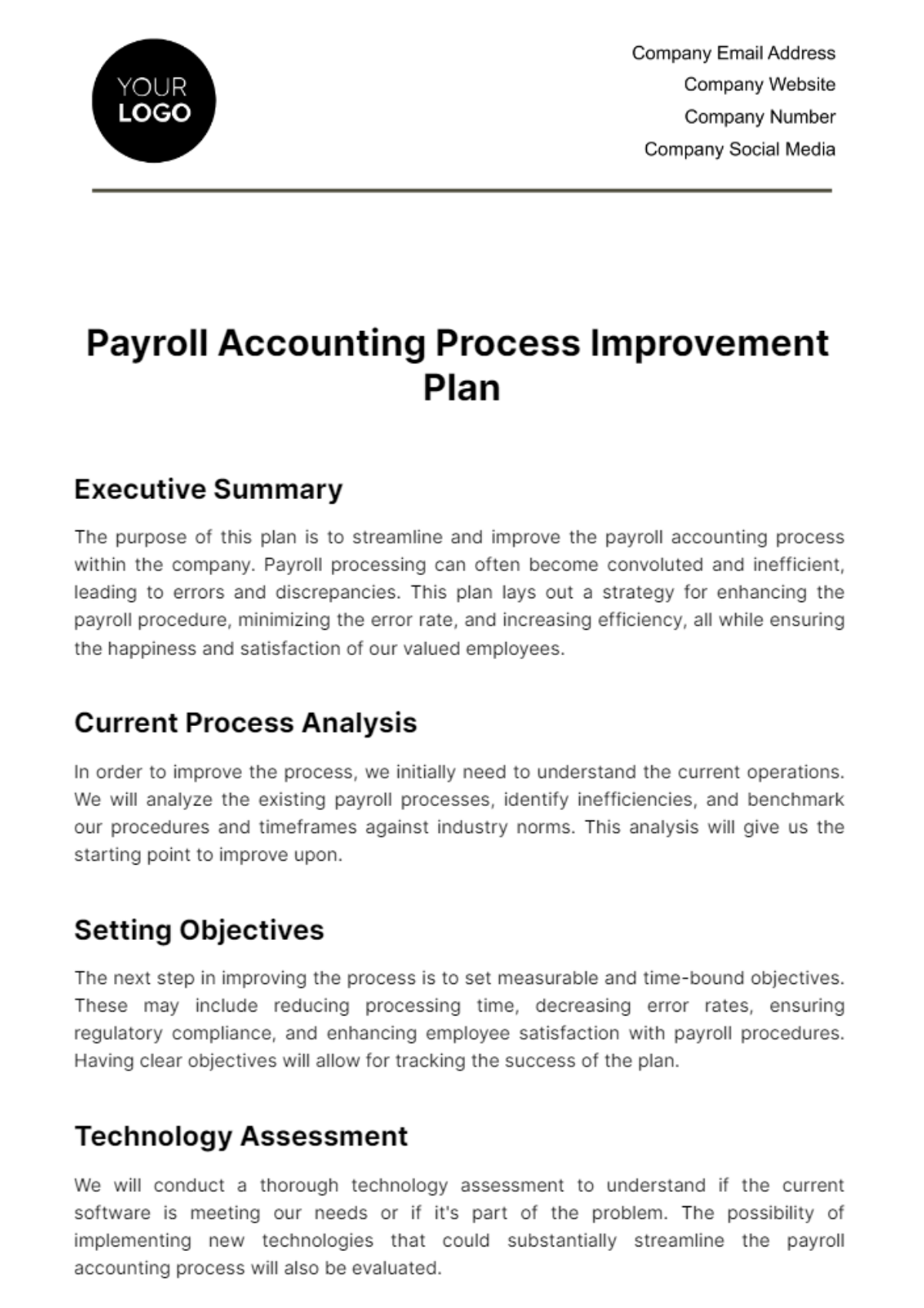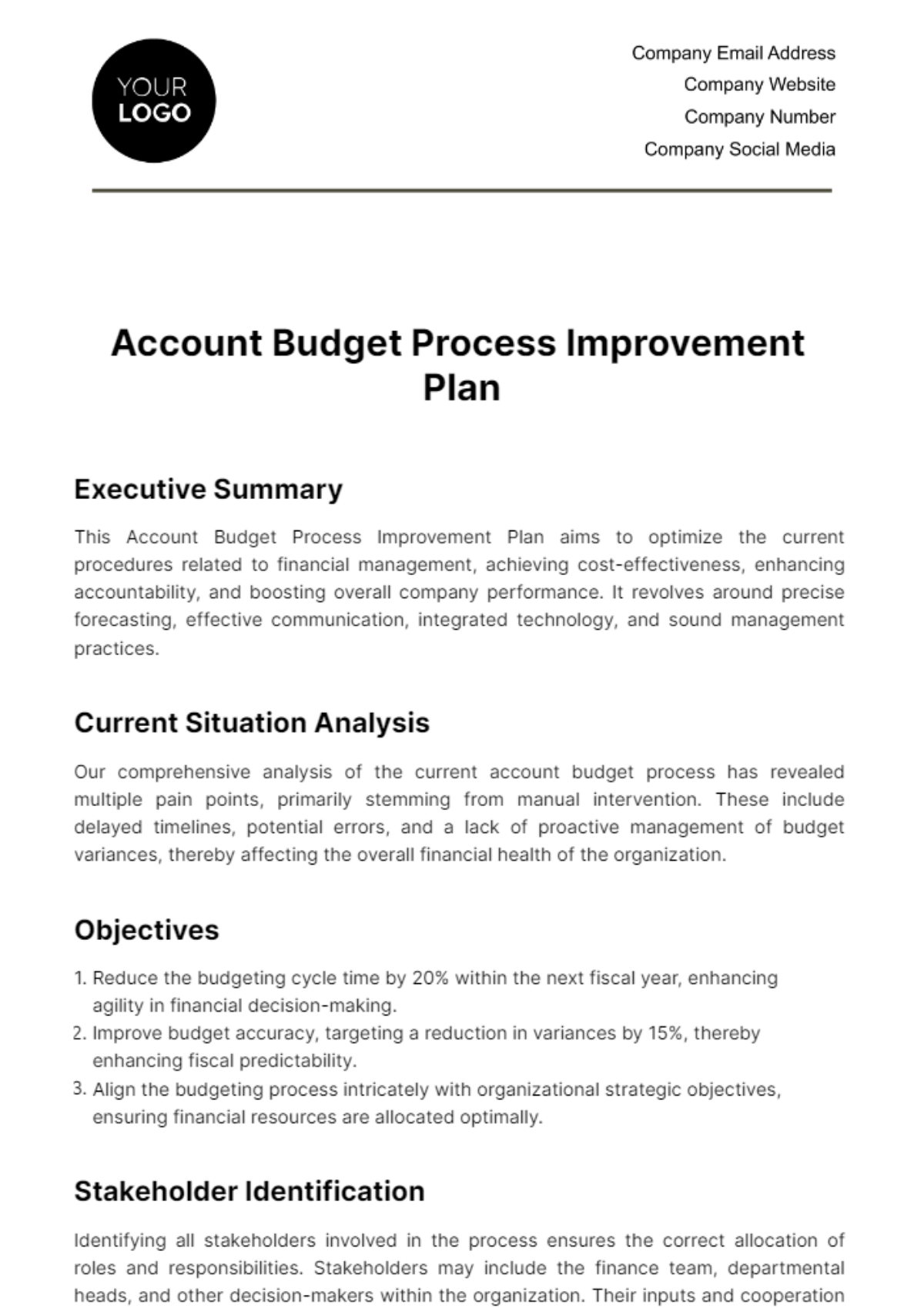Account Budget Process Improvement Plan
Executive Summary
This Account Budget Process Improvement Plan aims to optimize the current procedures related to financial management, achieving cost-effectiveness, enhancing accountability, and boosting overall company performance. It revolves around precise forecasting, effective communication, integrated technology, and sound management practices.
Current Situation Analysis
Our comprehensive analysis of the current account budget process has revealed multiple pain points, primarily stemming from manual intervention. These include delayed timelines, potential errors, and a lack of proactive management of budget variances, thereby affecting the overall financial health of the organization.
Objectives
Reduce the budgeting cycle time by 20% within the next fiscal year, enhancing agility in financial decision-making.
Improve budget accuracy, targeting a reduction in variances by 15%, thereby enhancing fiscal predictability.
Align the budgeting process intricately with organizational strategic objectives, ensuring financial resources are allocated optimally.
Stakeholder Identification
Identifying all stakeholders involved in the process ensures the correct allocation of roles and responsibilities. Stakeholders may include the finance team, departmental heads, and other decision-makers within the organization. Their inputs and cooperation are vital for a successful improvement plan.
Proposed Changes
Automation: Implement robust budgeting software to automate repetitive tasks, reducing manual errors and improving overall efficiency.
Streamlined Workflow: Redesign the workflow to minimize bottlenecks and ensure a smoother, more cohesive process.
Data Integration: Integrate financial and operational data, providing a holistic perspective for more informed budgetary decisions.
Implementation of Technology
Introduce cutting-edge budgeting software equipped with real-time collaboration features, advanced data visualization capabilities, and forecasting tools. This strategic technology integration empowers teams to make prompt, informed decisions, fostering financial resilience.
Training and Skill Development
Training will be conducted to ensure all stakeholders understand the new budgeting processes, software features and protocols. Learning these skills is crucial to ensure competent use of resources, leading to more accurate budget forecasts. Additionally, invest in targeted skill development programs focused on data analysis, equipping teams with the necessary competencies for navigating the enhanced budgeting process.
Timeline
Phase 1 (Months 1-3): Rigorous selection process for budgeting software and initiation of team training programs.
Phase 2 (Months 4-6): Implementation of automated workflow, ensuring a seamless transition.
Phase 3 (Months 7-12): Continuous monitoring, gathering feedback, and making necessary adjustments for ongoing optimization.
Performance Metrics
Budgeting Cycle Time: Measure the time taken for each budget cycle, aiming for a significant reduction.
Variance Analysis: Track and analyze the reduction in budget variances, enhancing fiscal predictability.
User Adoption Rate: Assess the speed and effectiveness of teams adapting to the new process, ensuring a smooth transition.
Feedback and Continuous Improvement
Institute a robust feedback loop through regular team meetings, surveys, and open forums. Encourage an organizational culture that actively seeks and implements suggestions for continuous process improvement, fostering a dynamic and adaptive financial management approach.


